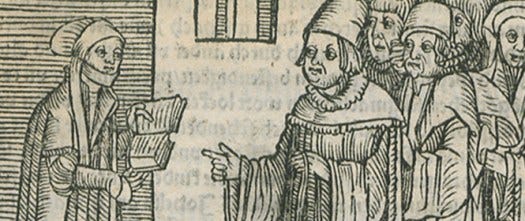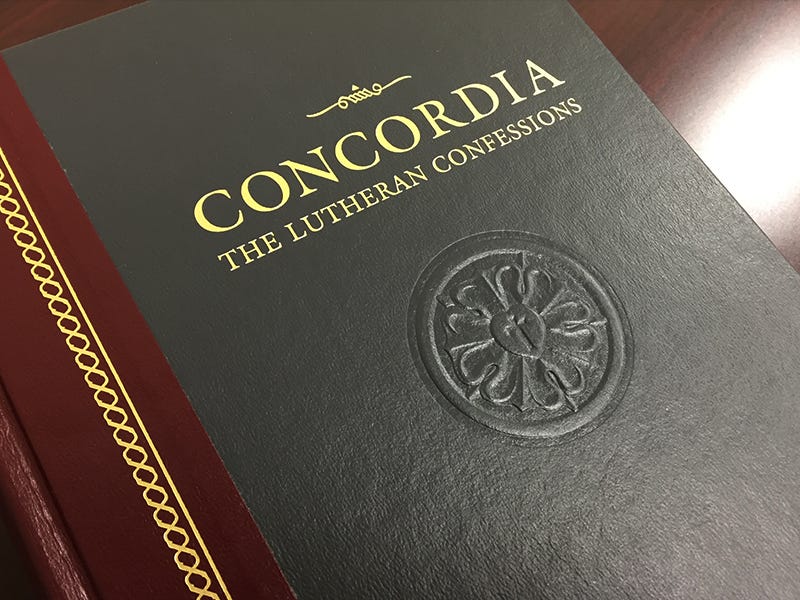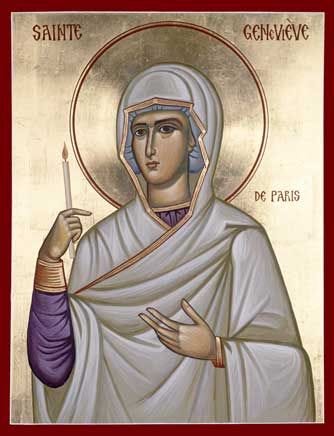A Friendly Confessional Lutheran Critique of Barr's The Making of Biblical Womanhood
Part II of the Epic Review
Barr’s real contribution in The Making of Biblical Womanhood is to finally make scholarship detailing the historical development of the threads constituting biblical womanhood accessible to the public. Her main argument that biblical womanhood, which tells women they must be domestic, housebound, and married mothers at the expense of other vocations is important and prophetic. As such, her book deserves to be widely read throughout the Church. She demonstrates that the way we often read even the Bible through a patriarchal lens has led the Church to discount the significance of named women in the Bible, including Mary Magdalene, Phoebe, and Junia. Moreover, the chapters on the history of women in the Church during the Middle Ages and Reformation period are alone worth the cost of admission. Her chapter on the Reformation, for example, helps explain why Katharina von Bora Luther died impoverished. Her tragedy extended beyond an individual failure on the part of the Church. Rather, it was a product of a newly constructed economic system that limited women’s opportunities outside the home.
The Making of Biblical Womanhood is a tour de force, but there are also spots where Barr could strengthen her historical arguments and where we, as confessional Lutherans, disagree with her theological conclusions. Again, historically speaking, Barr’s argument that “biblical womanhood” is essentially an evangelical version of the patriarchal cult of domesticity is accurate. There is nothing in the Bible that confines women to the domestic sphere and subordinates them to all men in all contexts. As the Lutheran Church – Missouri Synod’s Commission on Theology and Church Relations (CTCR) noted in 2009:1
The Bible’s clear direction regarding responsible male leadership in the home and male ordination to pastoral ministry may not be assumed to mean that only men can exercise any kind of leadership or authority in home, church, or society. Some view this as an inconsistency, but it is not. In Baptism every believer is called to service in his or her vocations within the various spheres of life. The body of Christ requires that its individual members exercise the wide variety of their gifts, whether that individual is male or female (1 Cor 12:7).... Such leadership of women is not inconsistent with Scriptural teaching. On the contrary, it exists in the very context of our church’s life and teaching which upholds and promulgates the divinely ordered responsibility of pastors and husbands. When women serve in this way they are enhancing the work of the priesthood of all believers, serving as members of the body of Christ, and not usurping pastoral authority or violating the 'order of creation.' Scripture provides numerous examples of such service, for instance Priscilla’s instruction of Apollos (Acts 18:26) or the teaching Timothy received from his mother and grandmother (2 Tim 1:5).2
However, this is not to say that we support approach Barr’s exegesis uncritically. She does not adequately address the distinction between biblical texts dealing with the vertical relationship between humans and God and those addressing the horizontal relationships between humans and other humans.3 For example, Galatians 3:26-29 relates to the vertical relationship between believers and God in Christ. But the other passages, such as those in 1 Corinthians 14, deal with horizontal relations within the Church or between spouses. Others, such as Ephesians 5, may address both.
Barr also does not address the reality that Jesus called twelve male apostles. As Barr correctly notes throughout her work, Jesus did not submit to the social norms of the period. Therefore, we cannot attribute His decision to call only males to the sexism of first-century Judea. Moreover, we agree with Barr regarding the obvious importance of Mary Magdalene in the Gospels and as the “apostle to the apostles.”
However, we would argue that this very significance makes it even more striking that Jesus did not personally call Mary as an apostle. Clearly, other factors are in play beyond patriarchy. Regarding the apostle Junia, it is important to realize that the same terms can have different meanings in different contexts throughout the New Testament. It seems that a requirement to be an apostle in the original sense was to have been with Jesus since the baptism of John and to have been a witness to the resurrection.4 Paul as “one untimely born” received a direct commission as an apostle from the resurrected Jesus.5 Regarding Junia, regardless of her sex, it’s unclear whether or not she was also a witness of the resurrected Jesus and therefore eligible to become an apostle in the strict sense of the term. In any case, we commend Barr for bringing the ministries of women like Mary, Phoebe, and Junia to the forefront. We do not, however, see a necessary connection between the good work of these women and the possibility of women’s ordination to the priestly or public pastoral office.
Related to this, Barr makes no distinction between women “preaching” and being a called and ordained minister of the Word. She takes her historical conclusion that “biblical womanhood” is a merely human invention to mean that women ought to serve as public ministers of the Word. Yes, women can “preach” the Gospel, as can all laity. We agree with Barr that Mary Magdalene is a good example of this.6 In the Smalcald Articles, Luther describes the many ways God delivers the Gospel. He also distinguishes between “the spoken Word by which the forgiveness of sins is preached [He commands to be preached] in the whole world; which is the peculiar office of the Gospel” and “the mutual conversation and consolation of brethren” (SA III IV). While God calls and ordains only certain men to the “peculiar [public] office of the Gospel,” all laity regardless of sex are called to deliver the Gospel to each other through the conversation and consolation of the brethren.7 In this sense, women like Mary Magdalene and Hildegard are indeed “preachers,” even if they are not ordained.
Barr seems to read her ecclesiology back into the medieval church, conflating—from a Lutheran perspective—preaching or leadership in the Church with ordained priestly or pastoral ministry. Hildegard certainly preached and her contemporaries certainly listened, but no one thought she bore the indelible mark of priestly ordination, and Hildegard did not see herself as an ordained priest. Roles and offices in the medieval church were very clearly delineated, so it is somewhat anachronistic to treat women’s leadership roles within the medieval church as examples of some sort of de facto ordination, especially on the basis of preaching alone, absent any sort of presiding over the mass. Again, some women may have acted like bishops, like Genovefa of Paris and Brigit of Kildare (both of whom Barr actually calls bishops on page 88), but that doesn’t mean they were bishops (as Barr clarifies on the next page).
Even Brigit, who was accidentally ordained a bishop, could not actually be considered a bishop because as a woman she would have lacked both the required form and matter to render the sacrament efficacious.8 That aside, it is not insignificant that the medieval church—hardly a bastion of feminism—not only allowed women to serve in positions of leadership but celebrated faithful Christian women who served outside the domestic sphere, and Barr is correct to point this out to modern readers.
Turning to the Reformation, Luther’s view on women is more complicated than Barr allows for. Here she relies on the historical work of Lyndal Roper, Merry Wiesner-Hanks, and Katherine French. It is true that “Luther taught that marriage was God’s best for both men and women, and his writings helped popularize the godly role of wife and mother.”9 As a product of the late Middle Ages, Luther held that women were ontologically inferior to and therefore naturally subordinate to men. The early Luther especially held that their primary purpose was to bear children.10 Unlike his predecessors though, Luther also made sex and sexuality, for both women and men, central to holiness.11 Especially after his marriage, Luther made the domestic sphere central to the vocations of both men and women. Moreover, despite Luther’s rigid views about appropriate gender roles for men and women in theory, in practice he was considerably more flexible.12 Luther corresponded with many women and regarded some as assets in propagating the Reformation and even as “possible coworkers.”13

Granted, Luther did not regard these female “coworkers” as “theologians,” but he did recognize their value as fellow members of the priesthood of all believers.14 Indeed, Lutherans have traditionally distinguished between the priesthood of all believers, which both laymen and laywomen equally possess, and the public pastoral ministry. The fact that women have served in leadership roles and even as preachers and teachers does not necessarily mean that they may be validly called as congregational pastors.
Moreover, Barr could have strengthened her argument about patriarchy in modernity by further addressing changes within the institution of marriage itself. The nineteenth century saw marriage in industrializing areas move from an economic to a companionate model. Indeed, a companionate marriage became the ideal of the cult of domesticity. Moreover, Barr’s work could benefit from greater attention to class analysis and the class-bound nature of the cult of domesticity. For example, we know that Victorian and Edwardian working-class women often aspired to the middle-class cult of domesticity, but were unable to live it out due to the economic reality of their lives—they had to work outside the home in order to survive! If biblical womanhood is heavily based on the cult of domesticity, does this mean it is also class specific? What does this mean for contemporary evangelical women? Do working-class evangelical women aspire to biblical womanhood in the same way as middle and upper-class evangelicals? Is the appeal of biblical womanhood cross-class? These would be fruitful avenues for further exploration.
Stay tuned for the final part our critique, covering inerrancy and possible Trinitarian heresy, in Part III...
[1] We want to point out that we are not speaking out of a vacuum and are not and shouldn’t be interpreted as saying anything contrary to a valid position within the LCMS.
[2] CTCR, “The Creator’s Tapestry: Scriptural Perspectives on Man–Woman Relationships in Marriage and the Church” [2009], 45.
[3] For example, see Barr, The Making of Biblical Womanhood, 52.
[4] Acts 1:21-22
[5] 1 Cor 15:8-9
[6] Barr, The Making of Biblical Womanhood, 86.
[5] Robert Kolb and Timothy J. Wengert, eds., The Book of Concord: The Confessions of the Evangelical Lutheran Church (Minneapolis: Fortress Press, 2000), 319.
[8] Barr, The Making of Biblical Womanhood, 89.
[9] Barr, The Making of Biblical Womanhood, 108.
[10] See Sini Mikkola, “In Our Body the Scripture Becomes Fulfilled” – Gendered Bodiliness and the Making of the Gender System in Martin Luther’s Anthropology (1520–1530) (PhD Diss., University of Helsinki’s Faculty of Theology, 2017), 91, https://helda.helsinki.fi/bitstream/handle/10138/228638/inourbod.pdf?sequence=1&isAllowed=y. See also See also Charles Cortright, “Poor Maggot-Sack that I Am”: The Human Body in the Theology of Martin Luther (Phd Diss., Marquette University, 2011), 173-4, https://epublications.marquette.edu/cgi/viewcontent.cgi?article=1101&context=dissertations_mu. See also Mikkola, Rakkaat Sisaret, Riehaantuneet Rouvat: Martin Lutherin Naiset (Helsinki: Kirjapaja, 2019).
[11] See Susan Karant-Nunn, “The Masculinity of Martin Luther,” in Masculinity in the Reformation Era, eds. Scott Hendrix and Susan C. Karant-Nunn (Kirksville, MO: Truman State University Press, 2008), 177.
[12] See Karant-Nunn, “The Masculinity of Martin Luther” and Mikkola, “In Our Body the Scripture Becomes Fulfilled” – Gendered Bodiliness and the Making of the Gender System in Martin Luther’s Anthropology (1520–1530).
[13] Mikkola, “In Our Body the Scripture Becomes Fulfilled” – Gendered Bodiliness and the Making of the Gender System in Martin Luther’s Anthropology (1520–1530), 121.
[14] Mikkola, “In Our Body the Scripture Becomes Fulfilled” – Gendered Bodiliness and the Making of the Gender System in Martin Luther’s Anthropology (1520–1530), 122.
The Making of Biblical Womanhood: How the Subjugation of Women Became Gospel Truth. By Beth Allison Barr. (Grand Rapids: Brazos Press, 2021, Pp. 256. $19.99, paperback.)
Images without links from http://www.bakerpublishinggroup.com/authors/beth-allison-barr/3414; https://lutheranreformation.org/get-involved/smalcald-articles-study-mass/; https://lutheranreformation.org/theology/smalcald-articles-study-first-chief-article/; https://www.pinterest.com/pin/240590805073718266/
Re-posted with permission from the blog Jack Kilcrease: Crux sola est nostra theologia, originally posted May 5, 2021.








